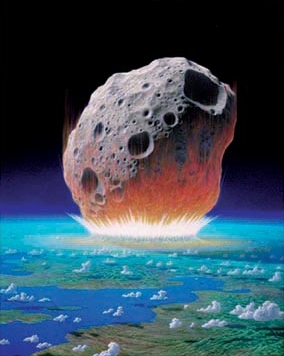Freitag, 02. Dezember 2016, 15:15 - 16:45 iCal
Meteorite Impact Cratering
A High-Pressure-High-Temperature Natural Geological Process
(Vortrag von Prof. Christian Köberl, Naturhistroisches Museum & Universität Wien, Department für Lithosphärenforschung)
Universität Wien, Chemische Institute, Seminarraum 2 (2124), 1. Stock
Währinger Straße 42, 1090 Wien
Seminar, Workshop, Kurs
All bodies in the solar system that have solid surfaces are covered by craters. In contrast to many other planets and moons in the solar system, the recognition of impact craters on the Earth is difficult, because active geological and atmospheric processes on our planet tend to obscure or erase the impact record in geologically short time periods. The recognition of geological structures and ejecta layers on Earth as being of impact origin is not easy. Morphological and geophysical surveys are important for the recognition of anomalous subsurface structural features, which may be deeply eroded craters or impact structures entirely covered by post-impact sediments. However, definitive confirmation of an impact origin requires to obtain the information required for understanding the ultra-high strain rate, high-pressure, and high-temperature impact process. This involves either shock metamorphic effects in minerals and rocks, and/or the presence of a meteoritic component in these rocks. In nature, shock metamorphic effects are uniquely characteristic of shock levels associated with hypervelocity impact. A wide variety of microscopic shock metamorphic effects have been identified. The most common ones include planar microdeformation features; optical mosaicism; changes in refractive index, birefringence, and optical axis angle; isotropization (e.g., formation of diaplectic glasses); and phase changes (high-pressure phases; melting). For the determination of the impact origin of a geological feature, the proper identification of either shock metamorphic evidence or the presence of extraterrestrial component is necessary. Impact cratering is a short.time, high-energy geological event in which conditions are created that exceed even the P-T conditions of nuclear bomb explosions.
Veranstalter
Institut für Physikalische Chemie, Universität Wien
Kontakt
Univ.-Prof. Dr. Wolfgang Kautek
Universität Wien
Institut für Physikalische Chemie
0043 664 60277 52470
wolfgang.kautek@univie.ac.at
Erstellt am Mittwoch, 30. November 2016, 14:04
Letzte Änderung am Donnerstag, 01. Dezember 2016, 09:58

